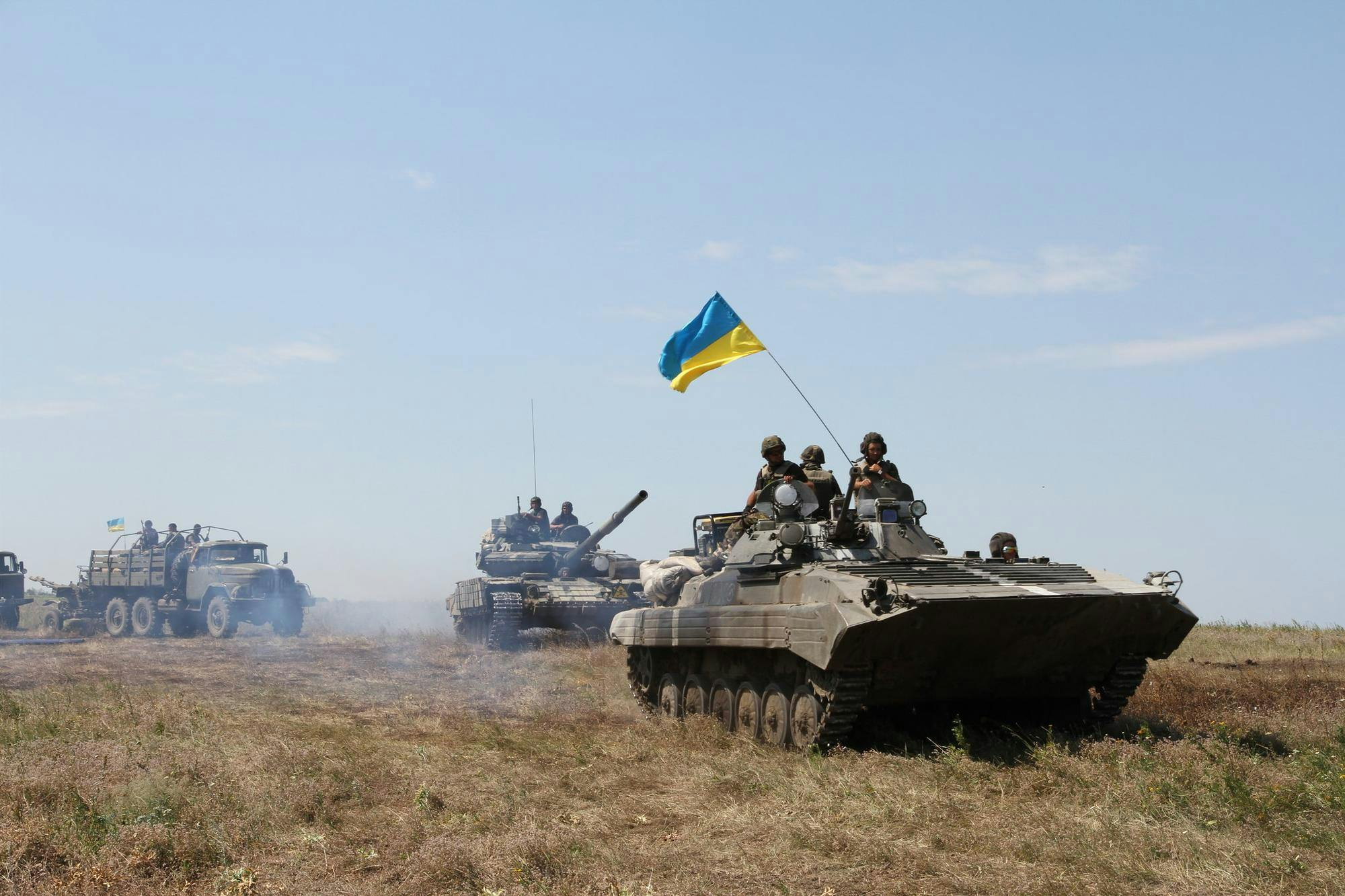The name “Azov Brigade” should be recognizable to anyone who follows the conflict in Ukraine. To Ukraine, it is a key military unit composed of motivated fighters who have resisted Russian aggression. To Russia, the Azov Brigade is a neo-Nazi terrorist formation. Both of these narratives contain elements of truth. Azov Battalion is an important part of Ukraine’s war effort, and it is a neo-Nazi formation that has committed numerous atrocities. The U.S.’s continuing military support for Ukraine despite its neo-Nazi problem and the whitewashing of the Azov by media outlets are fueling racism both in and outside of Ukraine.
The origins of the Azov Battalion lie in the 2014 Euromaidan Revolution, in which demonstrators overthrew the Ukrainian government. The revolutionaries were led by Andriy Parubiy, the founder of the neo-Nazi Social-National Party of Ukraine (renamed Svoboda). After the revolution, members of Svoboda were appointed to key government positions, including minister of defense, head of the general prosecutor’s office and deputy prime minister.
After Euromaidan, Russian-speaking territories in the eastern region of Donbas launched a rebellion against the far-right government in Kyiv. Volunteer militias, including the Azov Battalion (which was formed by the neo-Nazi Patriot of Ukraine party), arose to fight the rebels.
Between 2014 and 2022, as the war in Donbas dragged on, Ukraine’s far-right government continuously passed laws glorifying Nazi collaborators. In 2018, then-president Petro Poroshenko created a national holiday for Stepan Bandera, a Nazi collaborator whose soldiers murdered up to 100,000 people during the Holocaust. Poroshenko even made it a criminal offense to denigrate Bandera’s organization, the Organization of Ukrainian Nationalists, and a government-funded museum opened an exhibit in their honor.
Unsurprisingly, Azov only grew. Between 2014 and 2022, Azov trained neo-Nazi terrorists and even recruited Brazilian fascists to fight in Ukraine. They were banned from Facebook for racist and antisemitic content (they titled one page “Gas Chambers”). Yet, they were described by Poroshenko as “our best warriors,” and Vadim Troyan, a veteran of the Azov Battalion and Patriot of Ukraine, was appointed to be deputy minister of the interior, putting a neo-Nazi in charge of Ukraine’s National Police.
When Russia launched a full-scale invasion of Ukraine in 2022, Azov gained more prominence. The unit garnered praise from the Ukrainian government and was further integrated into the Ukrainian military, being expanded from a regiment into a brigade. Some media outlets changed the way they describe Azov; German state-owned media outlet Deutsche Welle, which once described Azov as a neo-Nazi regiment, soon began labeling allegations of neo-Nazism as Russian propaganda. The BBC followed a similar line, moving from investigating Azov’s neo-Nazi ideology in depth to downplaying Azov’s neo-Nazism.
Azov has not been “de-Nazified” after it was further integrated into the Ukrainian military in 2022, as Azov and some media outlets claim. Much of Azov’s leadership has been in the group since 2014 and has demonstrated neo-Nazi ties. Azov’s press officer and the head of Azov’s military school run social media accounts adorned with neo-Nazi symbolism. Azov’s logo even contains the Wolfsangel, a neo-Nazi symbol. Not only is Azov a neo-Nazi military unit, but Western media outlets are complicit in whitewashing that fact, commiting journalistic malpractice of the highest order.
As Lev Golkin discussed in one article, Azov has a symbiotic relationship with Putin. Azov’s existence allows Putin to justify his illegal invasion by claiming he is “de-Nazifying” Ukraine. Putin’s rhetoric allows Azov to further justify its existence to Western countries based on its opposition to Putin, and receive more support from the Ukrainian government. This gives Putin even more rhetorical weight to justify his invasion of Ukraine, and so the cycle continues.
The losers of this dynamic are sure to be Ukrainian Jews and Roma people. In 2017, according to one report, Ukraine had more incidents of antisemitism than all other post-Soviet countries combined. In 2018, Nazi groups and police marched door to door, terrorizing Roma people. Among the groups marching was C14, a neo-Nazi organization which has in the past received funding from the Ukrainian government.
Additionally, the presence of neo-Nazi ideology in the Ukrainian government goes beyond Azov and similar gangs. Ukraine’s parliament recently quoted Stepan Bandera in a statement. Ukraine’s Ministry of Defense posted a picture of a Ukrainian soldier wearing a patch with neo-Nazi symbols before deleting it after outcry. A Ukrainian general was filmed threatening to destroy Jews.
By integrating Azov into its armed forces and outlawing the denigration of Holocaust perpetrators, the Ukrainian government has shown it is willing to tolerate neo-Nazi extremism, which directly threatens Ukrainian Jews and Roma people. If the U.S. cares about its stated commitment to human rights, it should immediately re-evaluate its support for Ukraine and stop ignoring the radicalization of Ukraine’s military. Once a government starts employing neo-Nazis, it loses all moral superiority.




